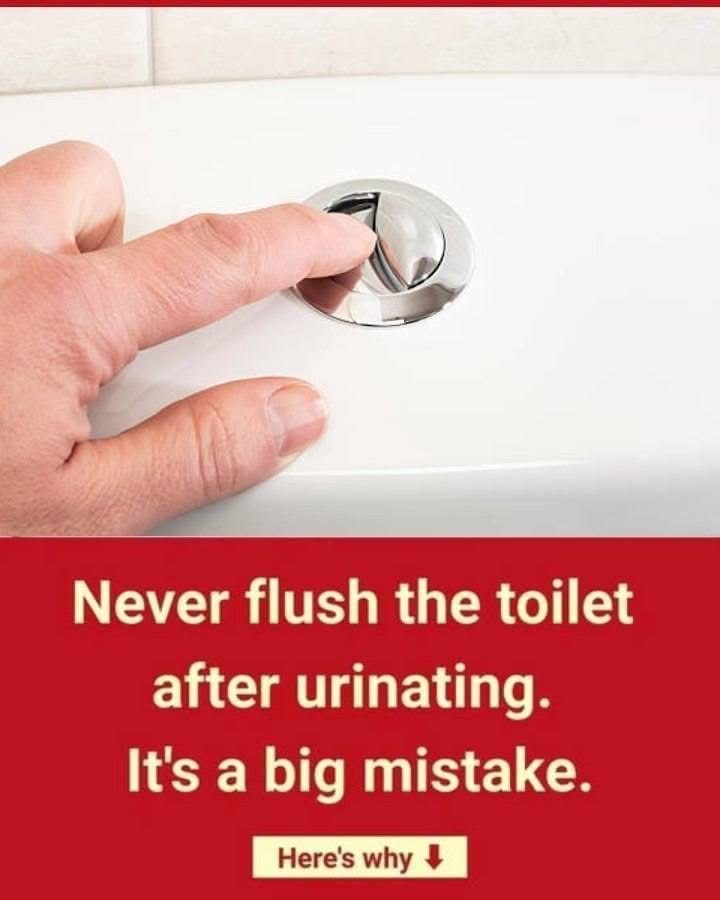Why It’s Important Not to Flush Every Time You Urinate
1. To Save Water
Each toilet flush uses 3 to 7 liters (or more) of clean, treated water — the same water that comes from your tap for drinking.
If you flush after every urination, you waste tens of liters of fresh water every day.
By skipping a few flushes, especially for just urine, you can save hundreds of liters per month.
💡 Common saying: “If it’s yellow, let it mellow; if it’s brown, flush it down.”
2. To Reduce Environmental Impact
- Treating and pumping water consumes a lot of energy.
- Reducing flushing means less water needs to be treated and transported, which lowers your carbon footprint.
- It also helps reduce strain on wastewater systems and sewage treatment plants.
3. To Save Money
If you’re on a metered water supply, fewer flushes = lower water bills.
Even in homes with flat-rate utilities, it reduces costs in areas where water shortages raise utility prices.
4. To Help During Drought or Water Shortages
In dry regions, every bit of water matters. Skipping unnecessary flushes is a simple daily habit that helps conserve limited water resources.
⚠️
However — Hygiene Matters
- Don’t leave urine unflushed for too long, especially in small, unventilated bathrooms, as it can cause odor or bacterial buildup.
- If multiple people share the bathroom, agree on a reasonable balance (e.g., flush every 2–3 times or whenever there’s noticeable odor).
- Always flush after solid waste.
✅
Balanced Approach
- Flush solid waste every time.
- For urine, skip a flush or two if:
- You’re alone or with family members who don’t mind.
- The bathroom is well-ventilated.
- It doesn’t cause smell or hygiene problems.
In short:
🚽 Skipping a flush or two helps save water, energy, and money — a small action with a big environmental impact.
